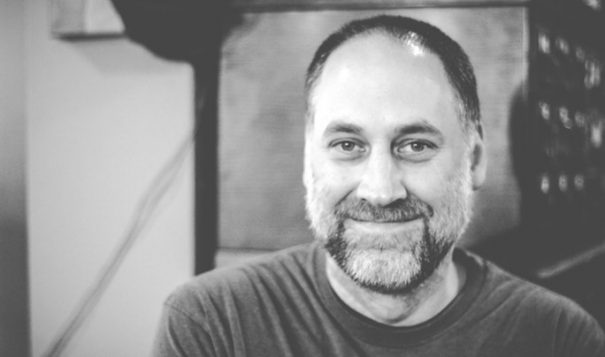 Joel Helfrich
Joel Helfrich
The year 2018 marks the 30th anniversary of the Arizona-Idaho Conservation Act of 1988, Congressional legislation that “authorize[d] the University of Arizona to establish an international astronomical observatory on Mount Graham” (called dził nchaa si’an in the Apache language) in Arizona. Bought and paid for by the University of Arizona (UA) in an intense lobbying spree, this bill enabled UA and its partners, including the Vatican, to (ab)use most of the mountain. Thirty years later, the environment on Mount Graham is worse than it has ever been and Western Apache efforts to protect their sacred mountain remain as fierce as ever.
Given ongoing profit-driven onslaughts against Indigenous peoples and places—for example, at Mauna a Wākea, Bears Ears, and Standing Rock—there is much to learn from previous attempts to gain control of sacred and ecologically unique Indigenous lands like Mount Graham.
Both Apaches and the U.S. government have acknowledged Mount Graham’s sacredness by deeming the entire mountain’s eligibility for listing on the National Register of Historic Places as a Traditional Cultural Property of the Western Apache people. Biological scientists have documented the environmental destruction caused by the telescopes, especially the rapidly declining population of endemic and endangered Mount Graham red squirrels. The United Nations High Commissioner for Human Rights has catalogued the egregious human rights violations by UA astronomers and their allies.
The mountains of Arizona, especially Mount Graham, play integral roles in the spiritual, mental, and physical well-being of Apache people. Since time immemorial the San Francisco Peaks, White Mountains, Mazatzal Mountains, and Mount Graham have served Apaches as moral as well as geographical guides.
Apaches have consistently resisted state-sponsored domination, violence, and colonialism-capitalism. In 1990, the San Carlos Apache Tribe wrote that the telescopes represented “a display of profound disrespect for a cherished feature of the Apache‘s original homeland as well as a serious violation of Apache traditional religious beliefs.” As but one of many racist and intolerant responses to uppity Apaches, in 1992 the Vatican Observatory director stated that the beliefs of Apaches and environmentalist allies are “a kind of environmentalism and religiosity to which I cannot subscribe and which must be suppressed with all the force we can muster.”
A catalogue of Apache opposition to the UA destruction of their sacred mountain includes additional resolutions from the San Carlos and White Mountain Apache Tribes and from the National Congress of American Indians (representing more than 550 sovereign nations).
Apaches have used Mount Graham since time immemorial for collecting sacred ceremonial objects, for food and water, for escape from raiding parties and the U.S. government and military, for refuge from severe weather, and various other activities and uses. Despite Apache’s deep grasp of the region’s plants, animals, minerals, ecologies, and, indeed, the universe, their “tried-and-true” knowledge has been shoved aside by Western science, astronomer’s quests for “progress,” and promises of “groundbreaking” technologies and “bigger” telescopes. Although other locations for this telescope project and other telescopes are better suited in every way, to complete the espoused scientific mission neither humanitarian nor scientific considerations have halted the Mount Graham International Observatory juggernaut.
Sacred places in the United States and globally are under attack. What is striking is that almost always those sacred places possess superior environmental qualities: for example, Mount Shasta, Mauna a Wākea, the Yunnan Province in China, and salt fields at Mexico’s Sea of Cortez. (In fact, white environmentalists would be wise to understand the links between sacred and ecologically unique places and work to support Indigenous peoples everywhere fighting for their sacred places.) Oak Flat, another sacred Apache place, is one of many current and ongoing battlegrounds.
In case of Mount Graham, the so-called “Apache wars” never ended. Apache Genocide, recently documented so aptly by social archaeologist John Welch, never ended. As long as Western—largely white and male—astronomers and the universities and research institutes they represent have a stranglehold on this sacred and ecologically-unique mountain, Western Apaches and the environment will continue to suffer. As long as the Vatican; UA, Arizona State University, Northern Arizona University (which hopes to become the go-to university for Indigenous peoples); Ohio State University; the universities of Notre Dame, Minnesota, and Virginia; and the National Institute for Astrophysics in Italy and Max Planck Institute in Germany, remain on Mount Graham, they will continue to perpetuate Apache Genocide.
Without your help, attacks on and the use and abuse of sacred Indigenous places by non-Native peoples will continue unabated.
Joel Helfrich teaches history and environmental studies in Rochester, New York. He supports the work of Apache Stronghold, is working on a book about the struggle for Mount Graham, and can be reached atjh002d@hotmail.com.
